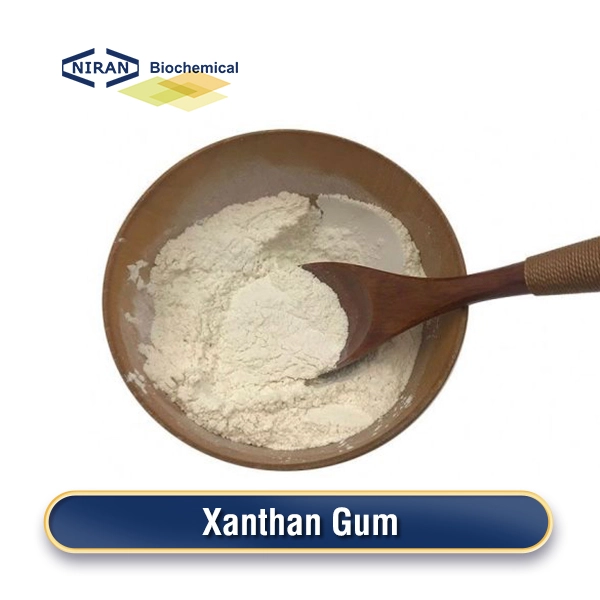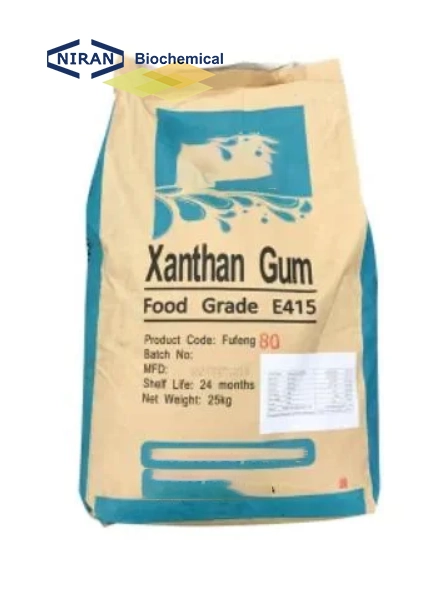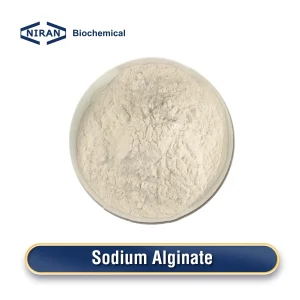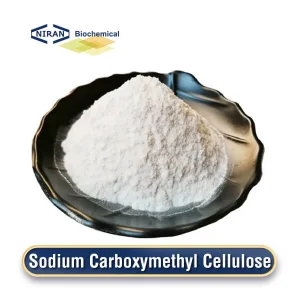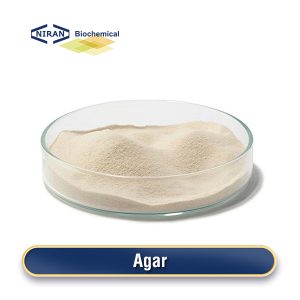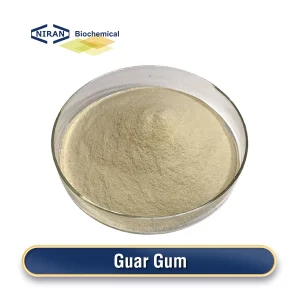Niran Biochemical
YOUR RELIABLE FOOD INGREDIENTS
Send Inquiry
Home » Products » Thickeners » Xanthan Gum
Xanthan Gum
- CAS: 11138-66-2
- Chemical Formula: C35H49O29
- Certification: KOSHER, ISO, HALAL, FSSC22000, BRC, etc.
- Standard:
- MOQ: 1000KG
- Shelf Life: 2 Years
Inquire Product
Product Description
What is Xanthan Gum?
Xanthan gum is a slightly scented, flowable powder that is either milky white or light yellow. It dissolves well in water but becomes insoluble in ethanol. It is widely utilized in more than 20 industries, including food, petroleum, and medicine, as a thickening, suspending agent, emulsifier, and stabilizer.
There are two preparation processes for xanthan gum in China, one of which is the fermentation method, which is to produce xanthan gum by fermenting microorganisms in a culture medium containing an appropriate amount of carbon source, nitrogen source, and mineral salts. The bacteria in the culture medium metabolize the carbon source and produce xanthan gum throughout the fermentation process.
The advantages of this method include that the production process is relatively environmentally friendly and sustainable, and the product quality is stable and easy to control. In order to meet the demands for production at various scales and quality requirements, it can also simultaneously modify the cultural conditions. It is also the main preparation process in China at present.
The second approach is chemical synthesis, which involves using chemicals to create xanthan gum. This method usually requires the use of specific chemicals and reaction conditions to synthesize xanthan gum. This method may have certain production advantages, but it is less common in practical applications due to the possible environmental pollution and waste disposal problems in its process, as well as the strict requirements on raw materials and conditions.
Related parameters:
| Items | Specification |
| Viscosity (1% KCL, cps) | ≥1200 |
| Shear ratio | ≥6.5 |
| V1/V2 | 1.02~1.45 |
| PH(1%solution) | 6.0-8.0 |
| Loss on Drying (%) | ≤15 |
| Ashes (%) | ≤16 |
| Pb (ppm) | ≤2 |
| Total Nitrogen(%) | ≤1.5 |
| Pyruvic Acid(%) | ≥1.5 |
| Total Plate Count(CFU/g) | ≤2000 |
| Moulds/Yeasts(CFU/g) | ≤100 |
| Coliform (MPN/g) | ≤0.3 |
| Salmonella | Absent |
Recommended dosage:
| Food name | Maximum usage(g/kg) |
| Yogurt | 0.5-0.8g/kg |
| Salad dressing | 0.5-1.0g/kg |
| Seasoning | 0.5-1.0g/kg |
| Baked goods | 1.0-3.0g/kg |
| Jelly candy | 2-3g/kg |
| Cake cheese | 0.5-1.0g/kg |
| Biscuits | 0.5-1.0g/kg |
| Seasoning meat products | 0.5-1.0g/kg |
| Puffed food | 0.5-1.0g/kg |
| Seasoning | 0.3-0.5g/kg |
| Functional beverages | 0.3-0.5g/kg |
| Canned meat | 0.5-1.0g/kg |
| Sauce | 0.5-1.0g/kg |
| Pickled products | 0.5-1.0g/kg |
| Mayonnaise | 0.5-1.0g/kg |
Xanthan Gum has a wide range of uses
1. Food: As a thickening, stabilizing agent, emulsifier, suspending agent, and processing aid, xanthan gum is added to a variety of foods. Xanthan gum is frequently used in salad dressings, bread, dairy goods, frozen meals, drinks, condiments, brewing, confectionery, cakes, soups, and canned foods because it can manage the rheology, structure, flavor, and appearance of the product and because its pseudoplasticity may provide a good taste.
2. The daily chemical industry: The high hydrophilic group content of xanthan gum molecules makes it a good surfactant with anti-aging and antioxidant properties. Xanthan gum is therefore the primary functional component in nearly all high-end cosmetics.
Moreover, xanthan gum can be added to toothpaste to give it thickness, form, and lessen wear on the surface of teeth.
3. Medical: Xanthan gum serves as a functional element of the widely used microcapsule drug capsule material on a global scale, helping to regulate the medicine’s sustained release. It has numerous particular medical uses because of its great hydrophilicity and water retention, like producing a solid water layer to prevent skin infections and quench thirst after radiation therapy.
4. Industrial and agricultural applications: Because of xanthan gum’s strong pseudoplasticity, an aqueous solution at a low concentration (0.5%) can control the rheological properties of the drilling fluid and maintain the viscosity of the fluid at the high-speed rotating drill bit, saving power. Meanwhile, the relatively static drilling part maintains high viscosity, preventing the collapse of the well wall.
User asked question:
Q: What are the effects of not adding xanthan gum in which food applications?
A: 1. Yogurt and dairy products: In yogurt and dairy products, xanthan gum can be used as a thickener to help improve the taste and consistency of the product. Without xanthan gum, the product may become too thin and have an undesirable taste.
2. Ice cream: Xanthan gum can help improve the mouthfeel and mouthfeel persistence of ice cream, making it smoother and more uniform. The absence of xanthan gum may cause ice cream to freeze too quickly or have a rough taste.
3. Salad dressing: Xanthan gum can be used as a stabilizer and thickener to help maintain the texture and mouthfeel of salad dressing. If xanthan gum is not added, salad dressing may separate or become too thin.
4. Jelly candy: In jelly and soft candy products, xanthan gum can be used as a gelling agent to give the product the appropriate elasticity and mouthfeel. The lack of xanthan gum may result in an unsatisfactory texture of jelly or soft candy.
5. Canned juice: Xanthan gum helps stabilize the particle suspension of juice and fruit puree and improves the mouthfeel. Failure to add xanthan gum may result in separation or precipitation of the juice.

